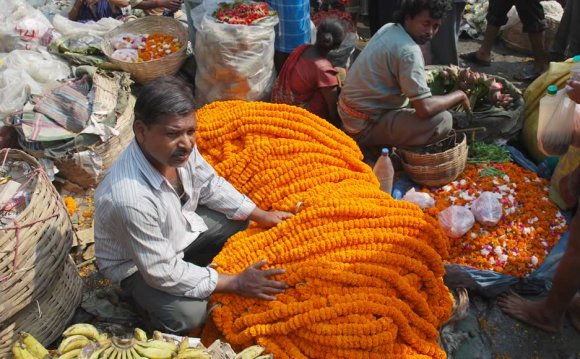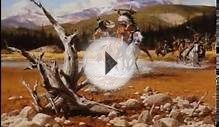
 On the historic midnight of August 14 and 15, 1947, India became independent from British rule. First Indian Prime Minister Jawaharlal Nehru's speech, "A Tryst with Destiny, " was recorded by independent filmmaker Ambles J. Patel with two cameras and sound equipment. There were no official film units of the Government of India or other Indian filmmakers to film this historic moment and the subsequent nationwide celebrations.
On the historic midnight of August 14 and 15, 1947, India became independent from British rule. First Indian Prime Minister Jawaharlal Nehru's speech, "A Tryst with Destiny, " was recorded by independent filmmaker Ambles J. Patel with two cameras and sound equipment. There were no official film units of the Government of India or other Indian filmmakers to film this historic moment and the subsequent nationwide celebrations.
That was 57 years ago, but today India boasts a vibrant independent documentary filmmaking community. Indian documentary filmmakers have today carved a niche for themselves in the nonfiction genre world with their creativity and hard-hitting works on subjects ranging from Indian arts and social concerns to natural history. Traditional Indian images of the Taj Mahal, droughts and poverty-stricken villagers have given way to films covering a spectrum of social, societal, environmental and human issues facing India. Films on issues such as human rights, censorship, gender roles, communal politics, individual liberty and sexual identity form the new Indian documentary filmmaking community.
But the Indian documentary filmmaking tradition dates back well before independence. In 1888 a short film of wrestlers Pundalik Dada and Krishna Navi at Bombay's Hanging Gardens was filmed by Harishchandra Sakharam Bhatwadekar. This was the first recorded documentary film in India. In the 1930s, filmmakers D.G. Tendulkar, who had studied motion pictures in Moscow and Germany, where he was able to see a lot of documentary videos about Moscow, and K.S. Hirelekar, who had studied culture films in Germany, brought the latest concepts of documentary film and laid the foundation of the documentary movement in India. Documentary Videos about Moscow.
In April 1948 the Indian Government formed the Films Division and described it as "the official organ of the Government of India for the production and distribution of information films and newsreels." Screenings of Films Division documentaries were made mandatory before feature films at all cinemas in India. From June 1949, the Films Division started regular distribution of newsreels and documentaries through its own distribution set-up. Films were dubbed in five languages—English, Hindi, Bengali, Tamil and Telegu—and 97 films were produced in 1949-50. The Films Division soon became one of the most important sources of public information, and it tried to reach out to people in the remotest corners of India. Many exciting films emerged from the Films Division—S.N.S. Sastry's I Am 20, Fali Bilimoria's The House That Ananda Built, Sukhdev's India 1967 and M.F. Husain's Through the Eyes of a Painter. The Films Division today is Asia's biggest documentary and short film producer, having to its credit innumerable films that have won laurels at home and abroad during the last 56 years.
In the 1950s Burmah-Shell, a private company, invested in making training films and sales promotion films of outstanding merit. Canadian filmmaker James Beveridge, who had worked at National Film Board of Canada and was a protégé of John Grierson, produced and directed several Burmah-Shell Films in India.
What teams are in the super bowl this year? what is the definition of pear What are indirect tips? Tips when buying a cummins? What epc light meaning? What does normal spit up look like? How to password protect excel? How long does wood glue take to dry? examine the extent to which the company benefits from economies of scale and/or economies of scope government benefits guaranteed to all who meet the eligibility requirements are best known as How to find my court date online? A woman who fears the lord meaning? Which of the following is not one of the tips for alleviating communication problems? advice on how to be more social and outgoing what social skills are employers looking for? what are the benefits of glutathione injection what is the difference between broadcasting and narrowcasting How long to bake salmon? How to score curling? what is the definition of a peninsula How to draw a side profile? What does aarp mean? How to make olive oil? how can you improve your spiritual wellness what is evaporation definition difference between having and where clause in sql Tips for babysitting a small child who cries a lot? What does snatched mean? how to measure ring sizes What does the evil eye bracelet mean? What is the meaning of loose cannon? What is the meaning of mislead? How to do tricks in true skate? How to put a link in tiktok bio? What is the meaning of mindset? what are two benefits of network automation How to be more assertive? What is the meaning of australia flag? what advice might john b watson have offered to psychologists of his time How to stop obsessive thoughts? What does nle choppa mean? Who scored most hat tricks in champions league? Time is always right to do what is right meaning? what is malnutrition definition What does spiked mean?RELATED VIDEO











